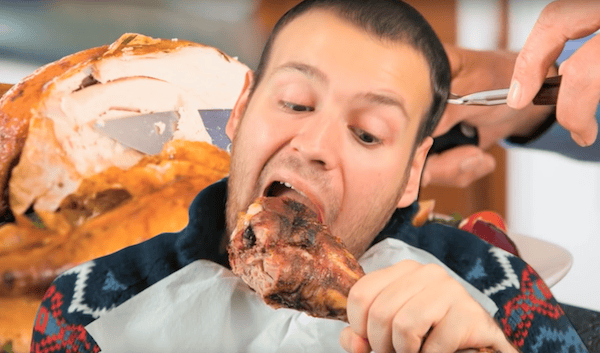
[Image above] Credit: BytesizeScience; YouTube
Thanksgiving is tomorrow—are you ready for the onslaught of food and relatives? While this annual U.S. tradition of inviting family and friends to our homes for a huge meal to celebrate our blessings has a rich history, we must keep in mind that there is a lot of science and chemistry that go into the Thanksgiving meal.
The American Chemical Society has been educating us about science since the late 1800s. It’s only fitting that it would devote an entire page on its website to the chemistry behind our Thanksgiving meal.
So while you’re waiting for the turkey to cook, check out the videos and impress your family with some newfound knowledge.
How does brining make the turkey more juicy? Wouldn’t it dry out the meat?

Credit: BytesizeScience, YouTube
And how does the plastic pop-up timer on the turkey know when it’s done? Did you know that you can reuse it?

Credit: BytesizeScience, YouTube
What is a Thanksgiving meal without mashed potatoes? Did you know there is one small chemical difference between paper towels and potatoes? There’s a reason we don’t eat paper towels.

Credit: BytesizeScience, YouTube
Why do muffins rise if there’s no yeast involved? It all comes down to a chemical reaction.

Credit: BytesizeScience, YouTube
Will you be celebrating with a little bubbly (champagne or soda)? This is why you always feel bloated after drinking carbonated beverages.

Credit: BytesizeScience, YouTube
And vegetarians—did you know that researchers are working to improve your meatless options?

Credit: Reactions, YouTube
After the meal is over, which antacid works best: Tums, Alka-Seltzer, or baking soda? Hopefully you will eat responsibly and won’t need any of the above.

Credit: BytesizeScience, YouTube
And if you attempt any experiments tomorrow, make sure you conduct them safely, wear goggles when necessary, and make sure you practice that tablecloth trick in advance so you don’t get banned from future Thanksgiving family gatherings.
Visit the ACS page to see more videos, experiments, and activities. Happy Thanksgiving to our readers in the U.S.!
Did you find this article interesting? Subscribe to the Ceramic Tech Today newsletter to continue to read more articles about the latest news in the ceramic and glass industry! Visit this link to get started.
Author
Faye Oney
CTT Categories
- Basic Science
- Education
Spotlight Categories
- Member Highlights


